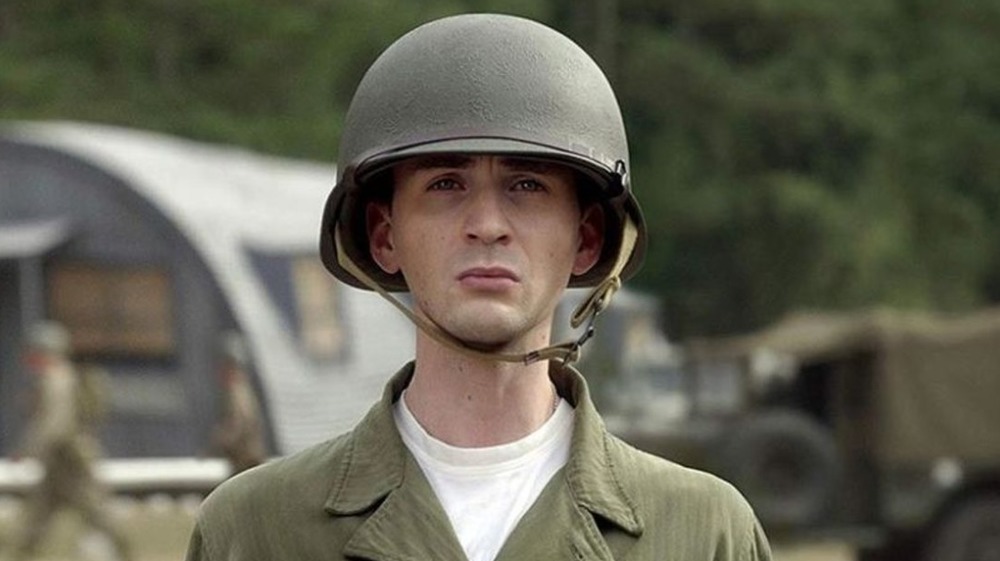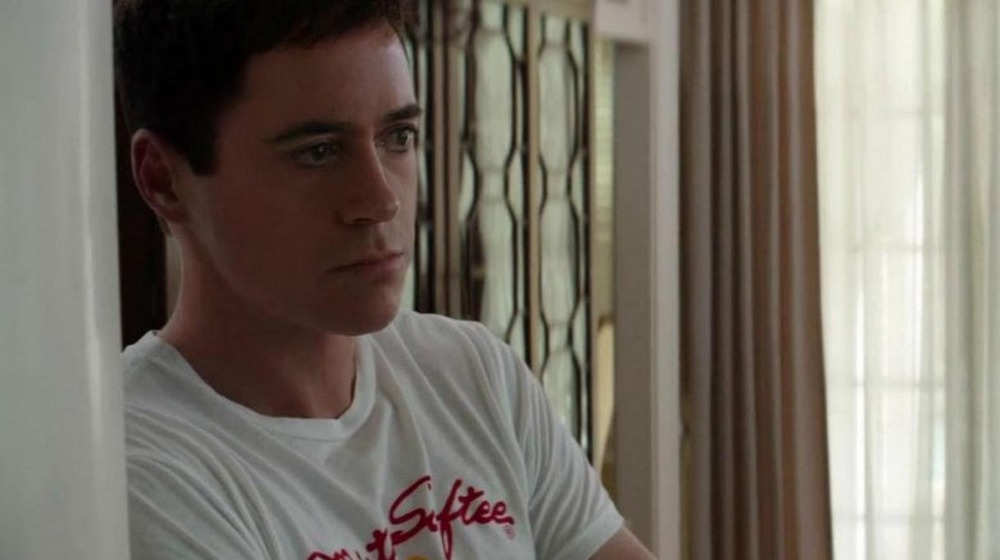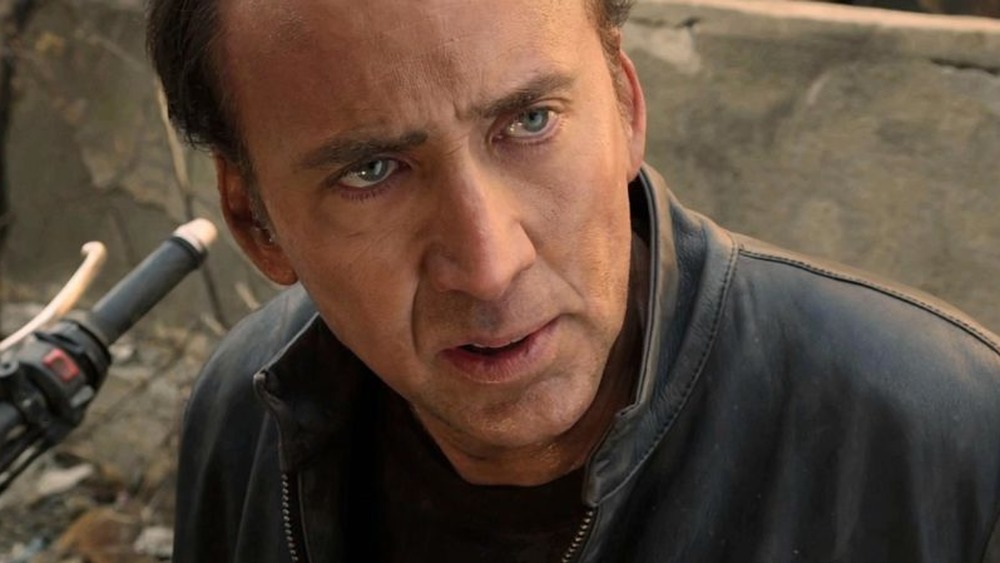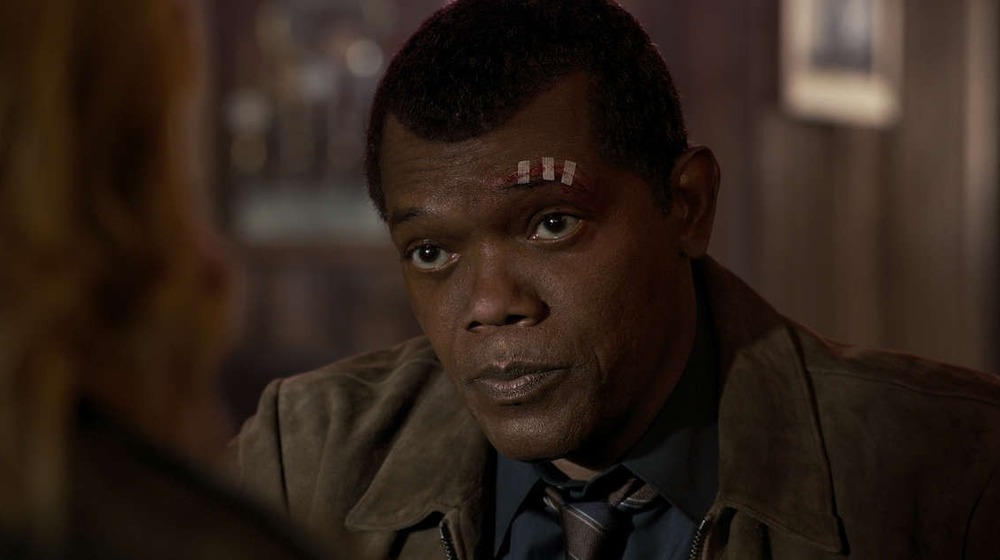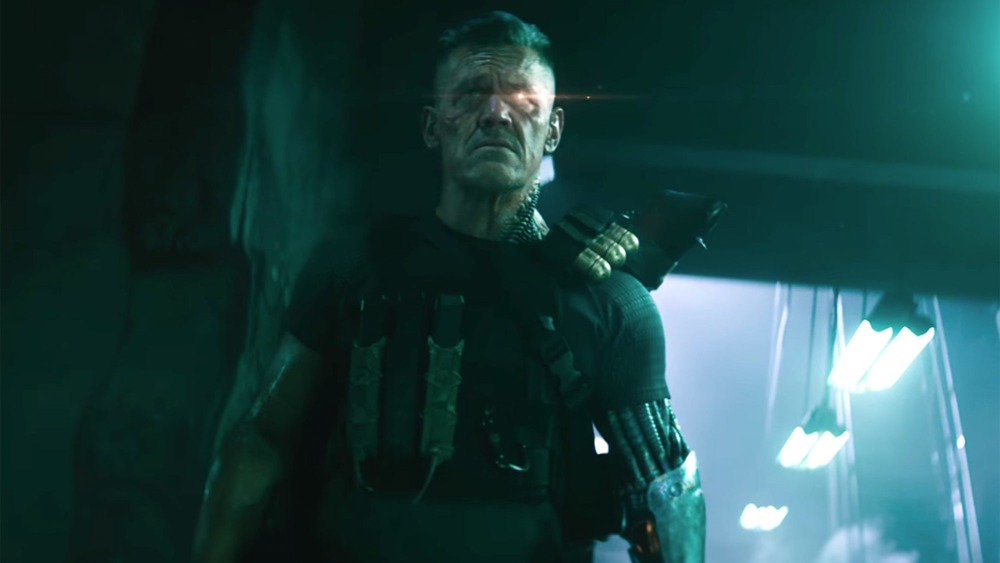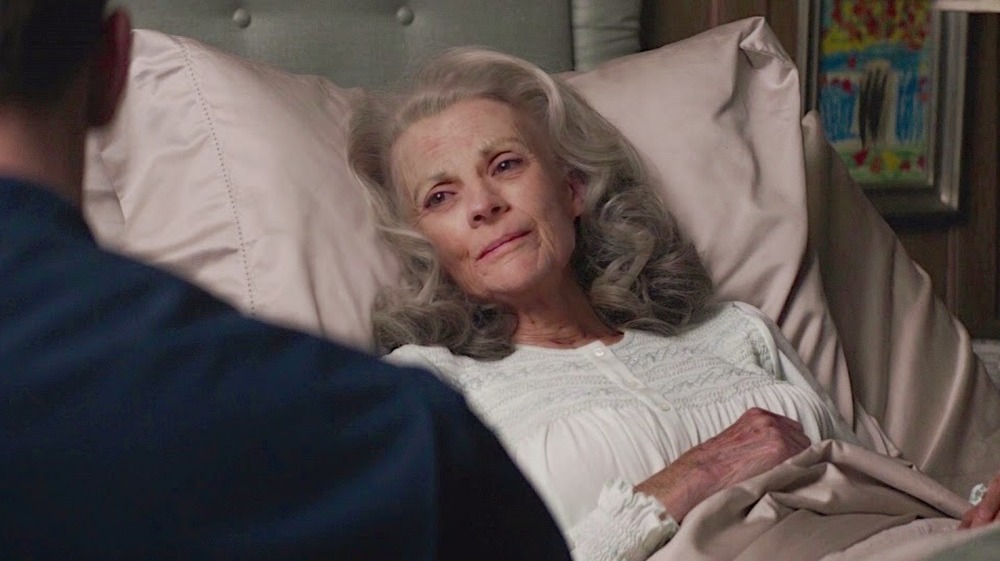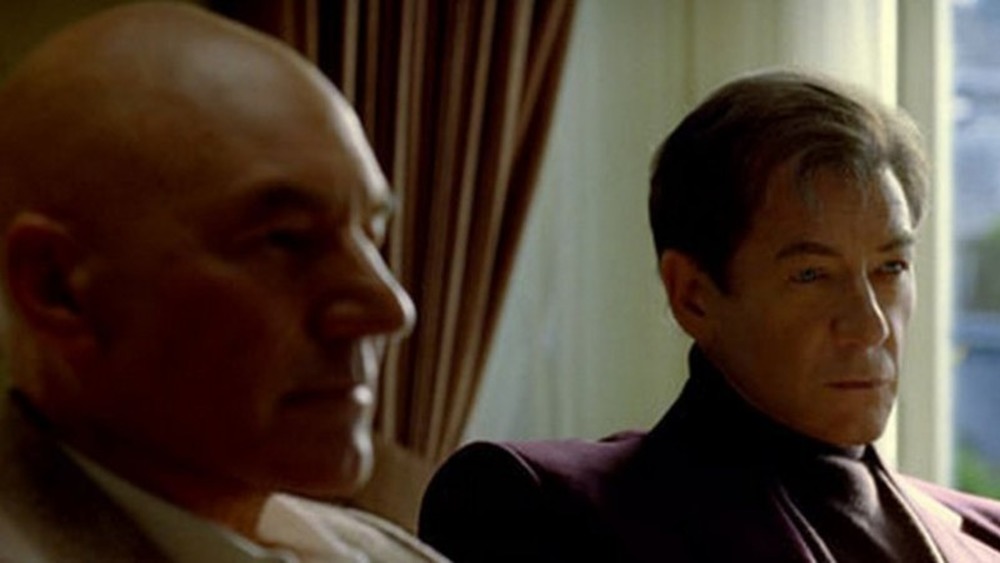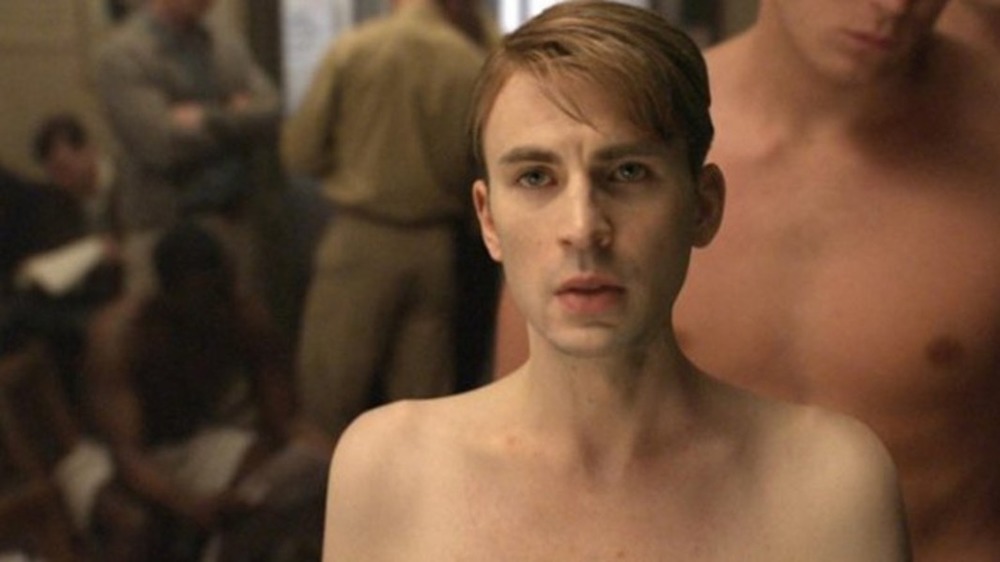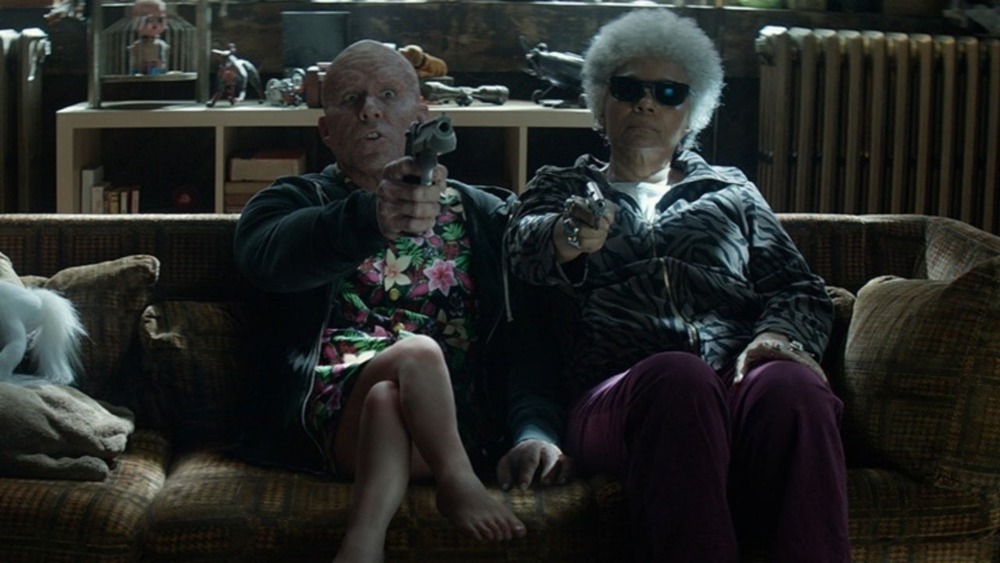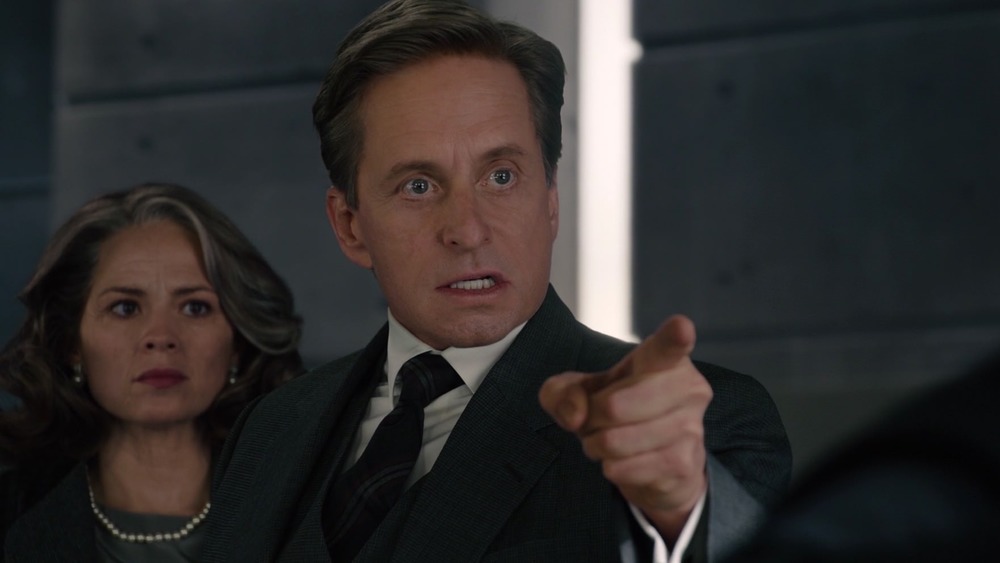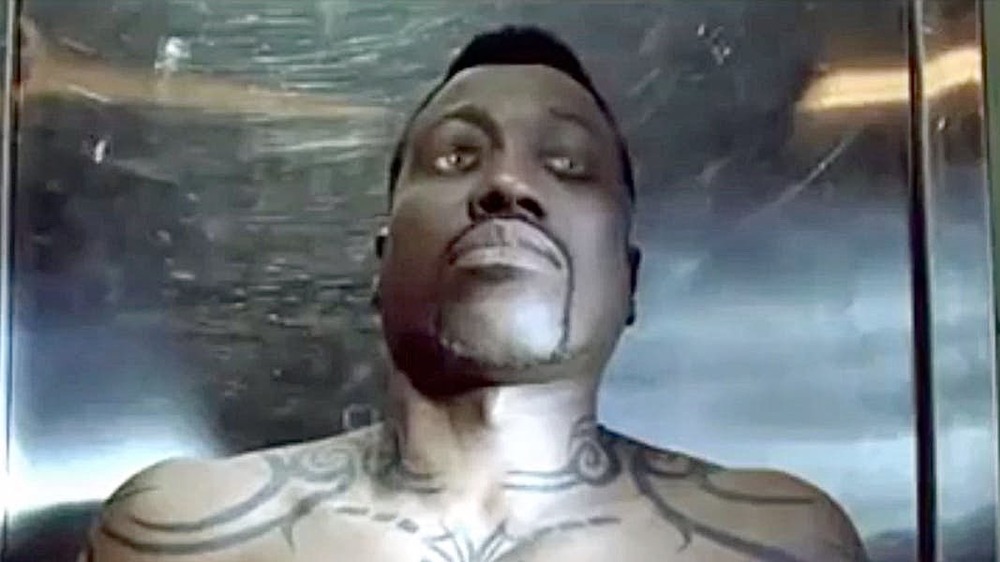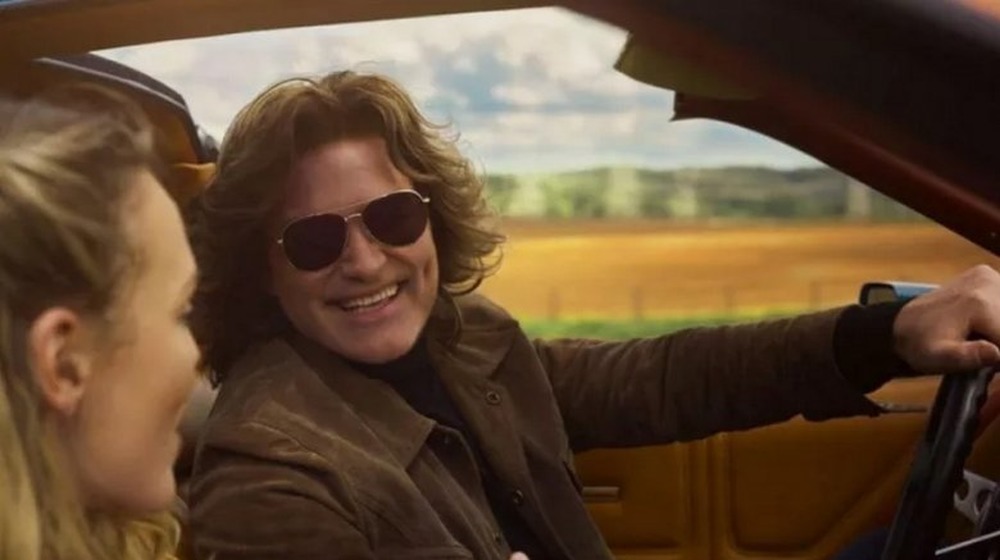These Marvel Actors Needed To Be Digitally Enhanced For Their Roles
The expanding limits of digital artistry are a huge part of what's made the success of Marvel movies possible. When you think of the biggest comic book-inspired hits of the past couple of decades, could you imagine them being made without digital effects? How could we have seen memorable spectacles like the final battle of 2019's Avengers: Endgame or the Hulk/Hulkbuster tussle of 2015's Avengers: Age of Ultron without digital enhancements? How could filmmakers even bring us characters like Thanos, Rocket, Groot, Juggernaut, or the Black Order?
Even if you forget the more fantastical aspects of Marvel's movies, the ability to digitally manipulate images has made so many things possible in Marvel's stories. In particular, digital artists have succeeded in believably de-aging characters for flashbacks in Marvel films, as well as time travel jaunts into the past. And along with making their actors appear younger, Marvel filmmakers have used digital enhancements to alter bodies, erase tattoos, and even to take up the slack for uncooperative talent.
For whatever reason — from manipulating time to replacing limbs — here are Marvel actors who needed to be digitally enhanced for their performances. (Warning — there are spoilers below.)
Robert Downey Jr. had the clock turned back in Captain America: Civil War
The first time we see Tony Stark (Robert Downey Jr.) in 2016's Captain America: Civil War, we're not really seeing Tony. This younger Tony, we soon learn, is a mental projection created through a technology developed by future supervillain Quentin Beck (Jake Gyllenhaal). The device is translating the last time Tony saw his late parents, Howard (John Slattery) and Maria Stark (Hope Davis), before they were murdered by the brainwashed Winter Soldier (Sebastian Stan).
Narratively, the scene sets up the surprise reveal at the end of the film, letting us know exactly why Tony reacts so extremely at the revelation in Civil War's climax that Bucky killed his parents. And Marvel Studios called on Lola VFX – a regular collaborator with Marvel – to take 20-25 years off Downey for the scene.
Trent Claus, Lola's VFX supervisor, explained to The Hollywood Reporter in 2016 that the scene was particularly difficult because it was done in a single shot. "The shot was nearly 4,000 frames long," Claus explained, "with Tony Stark turning from one side to the other multiple times, physically interacting with other actors and the set itself, and moving closer to the camera for a very long, uninterrupted close-up." Claus went on to say Lola extensively analyzed footage from Downey's '80s films and singled out 1987's Less Than Zero as a focal point.
For Ghost Rider, Nicolas Cage needed to erase his Ghost Rider
Fans were so impressed with how cut Nicolas Cage was in 2007's Ghost Rider that, over a decade later, speculation continues that the actor's physique was digitally enhanced. In fact, his co-star Eva Mendes has said she doesn't blame fans for their curiosity and would probably assume the same thing ... except that she had the chance to see Cage's abs in person. But while Cage didn't need digital enhancement to look beefier, he did need it for something else.
Ironically, for Ghost Rider, Cage needed his Ghost Rider erased — or more precisely, his Ghost Rider tattoo. A lifelong comic book fan — even naming his son Kal-El after Superman — Cage counts Marvel's Spirit of Vengeance as one of his favorite characters, and he had a large tattoo of Ghost Rider on his arm. Of course, it wouldn't make sense for Ghost Rider to have ink of his own fiery self, so for any shots in which Cage's bare arms were showing, the tattoo was digitally erased.
So let this be a less for any aspiring actors. If you want to play your favorite superhero character in a movie one day, while digital enhancements will make the casting possible even if you have a tattoo of that character, that doesn't mean it will help you get the part. Unless you're auditioning to play Tony Stark. He'd probably be fine getting a tattoo of himself.
Samuel L. Jackson needed to be a younger Nick Fury for all of Captain Marvel
By 2019, Marvel Studios and its filmmakers already had a good deal of experience using digital enhancements to make their actors look younger, but that year's first Marvel film – Captain Marvel — presented a unique challenge. In most of the films Lola VFX had worked on up to that point, characters only needed to be "de-aged" for a scene or two. But Captain Marvel, which heavily features Samuel L. Jackson as future S.H.I.E.L.D. director Nick Fury, is set in 1995. Rather than for just a single flashback, Jackson's appearance needed to be manipulated for the entire film.
According to Trent Claus, Lola's VFX supervisor, de-aging Jackson proved less of a challenge in some ways simply because time has been kinder to the actor. "He's aged very well, so whereas someone else might have a lot of wrinkles we need to remove, Sam really doesn't," Claus told Cartoon Brew.
Claus also said they were lucky in terms of finding references because Jackson had a lot of film appearances in the mid-'90s. Specifically, he mentioned movies like 1993's Jurassic Park, 1994's Pulp Fiction, and 1995's Die Hard with a Vengeance. Strangely, Claus said he found Jackson sometimes looks older in films that came out earlier than others. However, he explained that the movie Lola settled on for their main reference was the 1997 crime thriller One Eight Seven.
Cable's cybernetic arm was digitally created in Deadpool 2
Among other things, 2018's Deadpool 2 brought us the big-screen premiere of Nathan Summers, aka Cable, played by Josh Brolin. Like the MCU's Winter Soldier, one of Cable's arms appears to be made of metal. But while Bucky Barnes' metal arm replaces the one he was born with, Cable's arm is the result of an infection. The mutant one-man army is from a possible timeline in which he's infected with a techno-organic virus, making him appear to be a cyborg.
To achieve the look of Cable's arm, one option was to create a practical effect, like a specially rendered sleeve Brolin could've worn. However, Deadpool 2's VFX supervisor — Dan Glass of DNEG — told FX Guide that option seemed counter productive. "I felt like all too often things like a robot arm end up getting replaced and so it did not seem really worth our time to build a sleeve," Glass explained. Instead, Brolin wore a motion-capture sleeve during filming, which was used in the creation of the digital arm.
While Cable's digital arm was far from being the most involved effect in the film, it was the one Deadpool (Ryan Reynolds) chose to call out in a trailer for Deadpool 2, while at the same time taking the chance to poke fun at 2017's Justice League. One trailer features Cable without the arm's digital effects completed, and Deadpool pauses the trailer to complain, "It's a metal arm! It's not like we're trying to remove a mustache!"
Agent Carter was digitally aged in Captain America: The Winter Soldier
While it takes place around 70 years after Captain America: The First Avenger, the 2014 sequel Captain America: The Winter Soldier sees Hayley Atwell reprise her role as Peggy Carter. While aging actors is seen much more extensively in films than de-aging, the process of making Atwell look like an elderly woman was surprisingly complex.
The original plan was to shoot the scene twice — once with Atwell in no makeup and a second time with old-age prosthetics applied to the actress. Then, the effects team would project the old-age prosthetic shots onto those filmed with no makeup. But this didn't work because Atwell's performance in the prosthetics was deemed "restrictive." So, Lola VFX's effects team continued to do tests with prosthetics on an actress who resembled Atwell. "With each iteration of the test, the makeup artist would make the appliances thinner and thinner and by the end was some of the best prosthetics I'd seen," Lola VFX supervisor Edson Williams told FX Guide. "But it still wasn't quite what we were looking for."
Finally, Williams had what he calls his "Hail Mary" idea. Lola had already hired an elderly actress as a reference. But rather than using the actress simply as a reference, they filmed her performing the same scene as Atwell and projected her skin onto the younger actress. "We matched the lighting, the timing, and performance and literally stole the creases and cracks and put them onto Hayley," Williams mused.
Magneto and Professor X returned to a friendlier time in X-Men: The Last Stand
While 2006's X-Men: The Last Stand didn't impress a lot of fans or critics, it proved to be a landmark in the realm of digital enhancement. The Last Stand opens 25 years before the events of the rest of the film, with Professor X (Patrick Stewart) and Magneto (Ian McKellen) — still colleagues at this point — trying to recruit Jean Grey into Xavier's school. For the first time, Lola VFX was called in to turn back the clock on the ages of Marvel characters, and they used digital skin grafting to make the actors look younger, utilizing old photographs of the actors as reference.
Lola VFX co-founder Greg Strauss told CGW that before The Last Stand, Lola had worked mainly on music videos and cosmetic commercials, performing digital touch-up work on singers and actors. Lola had worked on films before The Last Stand, but the X-Men sequel marked the first time that they used the technology to "support the story" rather than as "a vanity tool set."
For the flashback scene, Lola didn't use prosthetics, makeup, a motion-capture apparatus, or any different shooting method. The sequence was shot as if no changes were going to be made to it at all. "We didn't limit the actors' motion, blocking, expressions, or anything," Strauss said, adding, "They did everything in-camera the way they wanted."
We needed to see the before and after of Steve Rogers in Captain America: The First Avenger
For the inspiring origin story of Steve Rogers (Chris Evans) in 2011's Captain America: The First Avenger, the film's hero needed to look very different before he was subjected to Dr. Erskine's (Stanley Tucci) super-soldier serum. Molding that stark contrast proved to be one of Marvel's most startling and impressive CGI effects.
While it was widely assumed almost all of the shots featuring the smaller Steve Rogers were accomplished by digitally attaching Chris Evans' face to a body double, Lola VFX supervisor Edson Williams told Variety that this method was only used for about 15% of the shots. For the rest, Evans' face and body were shrunk. This involved shooting everything at least three times. One shot was made with Evans, the next with Evans' smaller body double (Leander Deeny), and a final "clean shot" without any actor or body double.
According to Williams, one of the toughest hurdles was shrinking Evans' jawline for his "skinny" scenes because "if you start adjusting [face] geometry incorrectly, you'll start getting feminine traits." But "by far the most challenging part" of the process was caused by Evans' massive arms. Williams told Variety that when shot in profile, the actor's arms blocked "as much as one third of his body." So in profile shots, the fabric of Evans' shirts would need to be digitally erased and replaced with something else.
Ryan Reynolds was given kiddy legs in Deadpool 2
If you had to choose the funniest and most disturbing digital enhancement in all of Marvel's films, it's likely the winner would be Wade Wilson's tiny legs scene in Deadpool 2. In the film, Deadpool survives getting ripped in half by the Juggernaut, but it takes time to grow back his new legs, and we — along with most of the surviving characters — get to see Wade with the legs of a boy, complete with a Basic Instinct shot.
Dan Glass, Deadpool 2's VFX supervisor, told FX Guide the effects team tried a lot of different tricks and had a lot of fun doing it. For example, for shots when Wade is sitting on Al's (Leslie Uggams) couch, they tried cutting a hole in the sofa and having Reynolds hide his legs in the hole. "That approach had too much impact on [Reynolds'] body language," Glass said. Instead, the actor sat normally, and his legs were erased in post-production.
For the shots of when Wade gets off the couch and walks to Cable, the team had Reynolds try walking on his knees, but he needed to take extra care because walking on your knees versus walking on very tiny legs creates different upper body movement. "To work, you imagine that you don't have all the whole lower part of your leg behind you to balance," Glass explained. "And you also have to imagine that your legs are a lot weaker than they are."
Michael Douglas was de-aged a couple of times in Marvel flicks
In the opening of 2015's Ant-Man, we're treated to a look back to S.H.I.E.L.D.'s Triskelion headquarters, which are still under construction in 1989 — 25 years before it's destroyed in Captain America: The Winter Soldier. Before we meet the new Ant-Man, we meet the first one — Hank Pym, played by a Michael Douglas who looks more like Wall Street's Gordon Gekko than the Douglas of 2015. Peggy Carter and Howard Stark are both there to hear Pym tell S.H.I.E.L.D. what it can do with itself, punctuated with a knuckle sandwich to Mitchell Carson (Martin Donovan).
Lola VFX advised Marvel against using any of the usual de-aging makeup because it would play havoc with the lighting, and it asked for a younger stand-in on set as a reference point. Speaking to Vulture, Trent Claus said Douglas' extensive body of work from the late '80s was a double-edged sword. "It helped us a lot," Claus said, "but it made us work harder because the audience already knew what he looked like at that age. There wasn't a whole lot of leeway."
VFX supervisor Dan Deleeuw had to de-age Douglas even more for 2019's Avengers: Endgame, when they had to take 45 years off the actor. Similar to Ant-Man, a younger stand-in was cast to the repeat same scene Douglas did, and the younger skin was digitally grafted onto Douglas' face. Deleeuw told Deadline that for reference, they used Douglas' work on the '70s TV crime drama The Streets of San Francisco.
Wesley Snipes needed eyes added for a reportedly silly reason in Blade: Trinity
Before the MCU — before even Bryan Singer's X-Men films or Sam Raimi's Spider-Man trilogy — there was 1998's Blade, starring Wesley Snipes as the titular vampire hunter. It was the first of three films starring Snipes as the hero, ending with the 2004 bomb Blade: Trinity.
Due largely to a 2012 A.V. Club interview with his costar, Patton Oswalt, Snipes' bad behavior on the set has become the stuff of legend. Supposedly, he only communicated through post-it notes signed "Blade," and he allegedly assaulted director David S. Goyer. Snipes denied some of Oswalt's allegations in a November 2020 interview with The Guardian, but proof of at least one of the behind-the-scenes stories remains intact in the film itself. For a shot when Blade is meant to wake up on an autopsy table, Snipes supposedly refused to open his eyes. Rather than trying to force the matter, Goyer called it a day and had Blade's open eyes added to the scene in post-production.
We saw a younger Kurt Russell in Guardians of the Galaxy Vol. 2
Just as its predecessor does, Guardians of the Galaxy Vol. 2 opens on Earth decades in the past, with Kurt Russell playing Ego, Star-Lord's (Chris Pratt) father. He may have been in his 60s when he filmed the scene, but Russell looks like he's ready to put on an eyepatch and save the president as Snake Plissken. Interestingly, there seems to be some disagreement about how his rejuvenation was achieved.
Speaking to Cinema Blend in 2017, Russell claimed the filmmakers "didn't do much [digitally]" for the scene. He went on say the younger look was achieved with "about 90%" makeup and said he's been working with the same makeup artist since 1989. "It's amazing what he could do and what we could do with a wig."
But in the comments section of a video he posted on Facebook, writer-director James Gunn described a much more involved process that sounds similar to what'd happened in other Marvel films. "A company named Lola did the effects, and they did an incredible job," Gunn wrote. He continued, "First we film every scene with Kurt. A young actor, Aaron Schwarz ... watches everything [Kurt Russell] does. He then goes in and mimics Kurt's actions. We then take Kurt's acting and general face and body and place Aaron's skin onto him. It is a long, painstaking process that took many, many months to accomplish."
